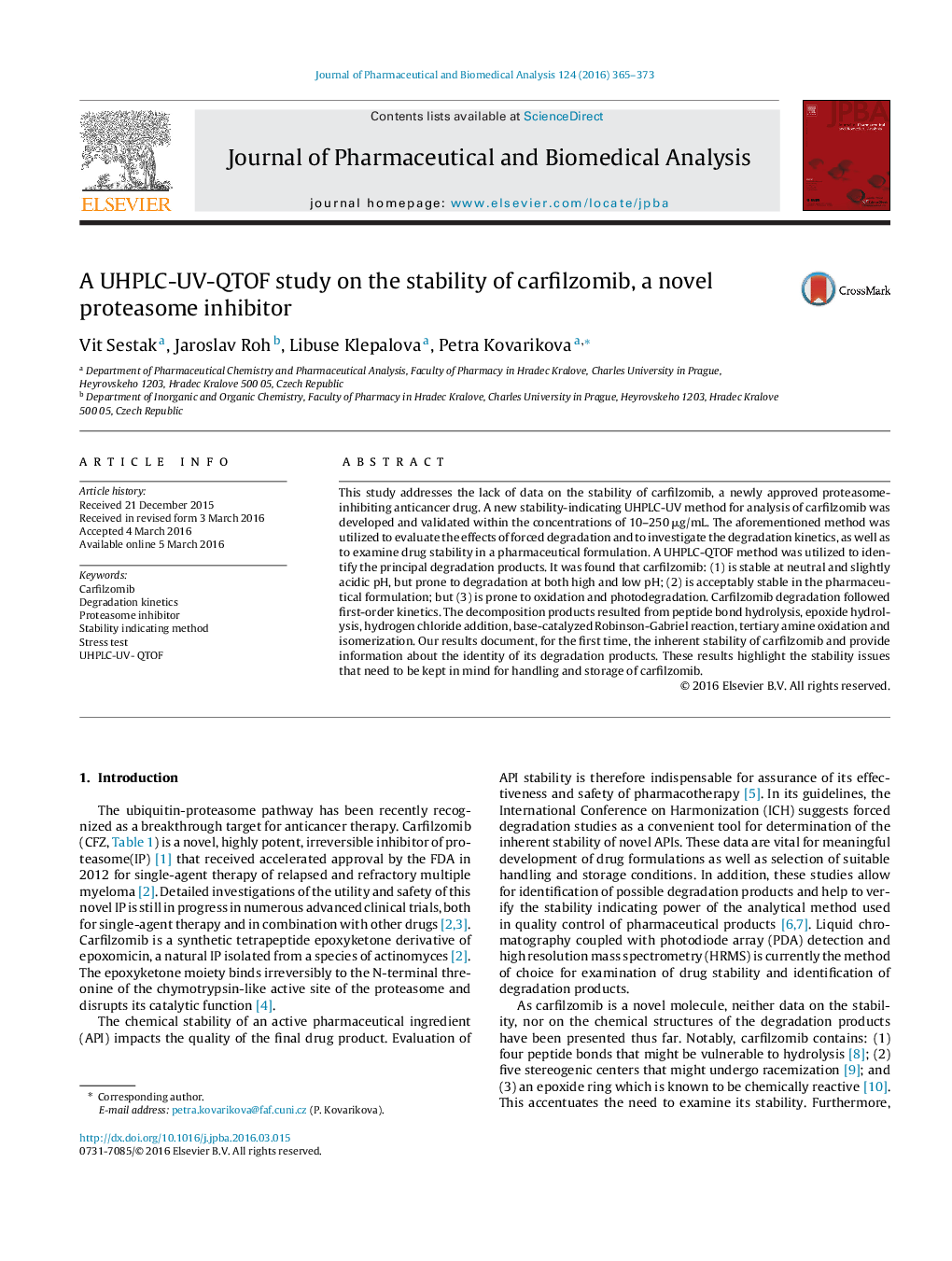| Article ID | Journal | Published Year | Pages | File Type |
|---|---|---|---|---|
| 1220207 | Journal of Pharmaceutical and Biomedical Analysis | 2016 | 9 Pages |
•A stability indicating UHPLC-UV method for assay of carfilzomib was validated.•Carfilzomib is stable in neutral to slightly acidic pH and in relevant formulation.•Degradation products were identified using UHPLC-QTOF.•Degradation pathways were proposed for all the degradants.
This study addresses the lack of data on the stability of carfilzomib, a newly approved proteasome-inhibiting anticancer drug. A new stability-indicating UHPLC-UV method for analysis of carfilzomib was developed and validated within the concentrations of 10–250 μg/mL. The aforementioned method was utilized to evaluate the effects of forced degradation and to investigate the degradation kinetics, as well as to examine drug stability in a pharmaceutical formulation. A UHPLC-QTOF method was utilized to identify the principal degradation products. It was found that carfilzomib: (1) is stable at neutral and slightly acidic pH, but prone to degradation at both high and low pH; (2) is acceptably stable in the pharmaceutical formulation; but (3) is prone to oxidation and photodegradation. Carfilzomib degradation followed first-order kinetics. The decomposition products resulted from peptide bond hydrolysis, epoxide hydrolysis, hydrogen chloride addition, base-catalyzed Robinson-Gabriel reaction, tertiary amine oxidation and isomerization. Our results document, for the first time, the inherent stability of carfilzomib and provide information about the identity of its degradation products. These results highlight the stability issues that need to be kept in mind for handling and storage of carfilzomib.
Graphical abstractFigure optionsDownload full-size imageDownload as PowerPoint slide
